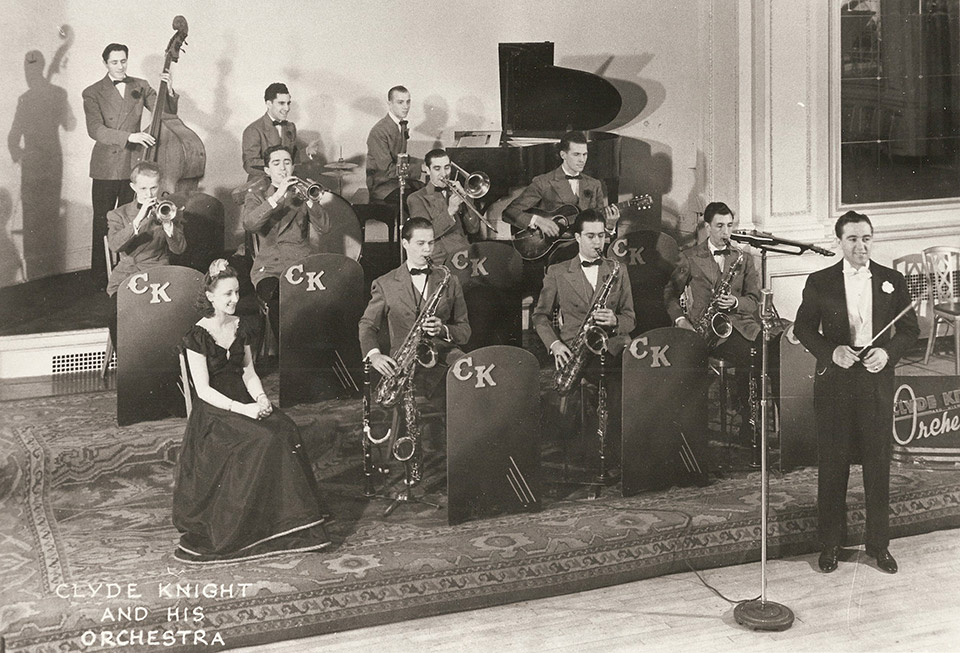In 1964, George Simon, an eminent New York authority and critic, published his book, The Big Bands.
This work was primarily a digest/restatement of columns and essays which Simon had authored over many years as a contributor to Metronome and other publications and periodicals. It had a very personal slant on the subject and conveyed his likes, dislikes and prejudices regarding its subject material, the American dance band.
As this was the signal authoritative work on the subject, his characterization of dance bands as “big bands” entered popular usage. In addition, it could be postulated that Simon’s prejudice in favor of jazz and swing-oriented performance and against commercial, melody-oriented performance colored the public’s acceptance of dance band music thereafter.
Now, there has traditionally been a sort of mocking of the ”businessman’s bounce,” or commercial style of arrangement and performance, as “unhip” – which it is. But year-after -year in Downbeat summaries, the number of commercial dance bands, such as led by Guy Lombardo and others, vastly outnumbered the swingers and “hot” groups, which may be an indication of the popularity of and demand for simple, uncomplicated, melodic, romantic music with the primary customers, the dancers.
Beginning in about 1920, the modern dance band was created by leaders like Paul Whiteman, Art Hickman, and others. Social dance steps such as the fox trot, tango, etc. had evolved in popularity due to the influence of professional dance teams such as Vernon and Irene Castle, who promoted the social acceptability of couples dancing in public places. By the late “teens’ this acceptance had created the need for a new style of arranged dance music, which Whiteman and the others supplied using new instrumentation and arrangements: the dance band.
This “new style” mainly consisted of arranging music for groupings or “sections” of similar instruments: woodwinds, brass, strings, etc. In this style, the saxophone was elevated to prominence in playing melody, from its previous status as a solo or “novelty” instrument.
The so-called “big band (dance band) era” had ended by 1960, prior to publication of Simon’s book. In the years to the present time, the public’s first-hand recollection of the subject has diminished to the point where – again in the author’s opinion – collective recollection merged with the content and attitudes of the book. Thus, the public’s connotation of “big band” and “dance band” are the same and include Simon’s predisposition to jazz, swing, etc. And since musical tastes and dancing styles no longer demand large groups of musicians playing section-arranged melodies for social dancing, and the costs of maintaining and transporting from 8 to 20 personnel have soared, the true dance band has become nearly extinct.
Except when playing hot, swing music! (The specialty of the “big band.”)
But this type of performance is more suited for listening than dancing: thus the emergence of concert venue for the big band, now sometimes called the “stage band.”
When did this perception of the dance band as a concert entity take place?
Historically, it was commonplace for certain aggregations to play concert-style to non-dancing audiences. Even on dance dates, the hotter bands would characteristically put on a performance interlude to demonstrate their virtuosity, not intended for dancing. As the dance venues decreased, some of the bands primarily became concert performers. Bandleader Stan Kenton very early-on became a concert impresario and performer with his avant-garde, “progressive” sounds. He was followed by Woody Herman, Count Basie, Maynard Ferguson and others who found that concert performances could prolong their careers. Incidentally, some bands still retained their dance arrangements for occasional appearances: the author remembers hearing Woody Herman playing dance music for a private engagement as late as 1982!
Continuous performance of “killer-dillers” to the exclusion of the softer, slower ballads has always had an attraction for the young, the hip, and the listener interested in solo performance technique. But while this left the listener symbolically “breathless,” it also had the same effect – in reality – upon the playing musicians. In interviews with prominent bandleaders, such as Les Brown, the author consistently asked about the frequency of this type of performance in, say, an evening’s program at a typical dance venue. Without exception the response was that frequent hot swinging tested the dancers’- not to mention the musicians’ – endurance.
In conclusion, the dance band for various reasons, has morphed into the big band, and in the process and with passing time, has lost its original purpose, interest and culture.
Copyright 2014, Paul F. Roth. All rights reserved.

David Sallinger Collection
